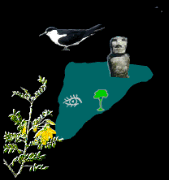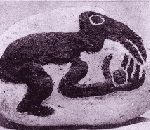
Welcome to the Rapa Nui Region. Here you will find interesting information about this Chilean Indigenous People.
The region contains four main subjects: People (History, Social Organization, environment), Language (Gramma, Vocabulary), Customs (Spiritual World, Rituals, Mythology) and Art. Use the Interactive Map to take an animated tour of this people´s region. The teachers and students will find contents (texts and images) that be able for Printing.
There is also a Resources section in which you will find a virtual Library with Dictionaries, Texts, Books and a complete Links Directory. In addition you could listen to music or watch documentaries in our Videos, Music and Storytelling sections. Finally if you have a question relating to something other than one of these topics, you can use our Search Engine or the Site Map or write to us through the Contact form. You are cordially invited invited to Subscribe our monthly Newsletter to be informed about the site and our Chilean Indigenous Cultures news.

Another important and singular manifestation in the rapa Nui culture is the rock Art that was developed through two modalities: petroglifos and paintings.
In the island exist around 1,000 sites of Rock Art with approximately 5,000 registered motives, that are grouped in 12 groups emphasizing the anthropomorphous figures and isolated anthropomorphous characteristics, birds, species, ceremonial objects, boats have settled down, etc.
The main motive in the petroglifos is the representation of the man bird or Tangata Manu. It is engraving on rocks of Mata Ngarau in the ceremonial village of Orongo next to volcano Rano Kau. The paintings are littler in the island, being in places like Motu Nui (one of small barren islands in front of Orongo), in inner walls of some houses of Orongo, in the Ana Kai Tangata cavern and other caverns located in the North coast.